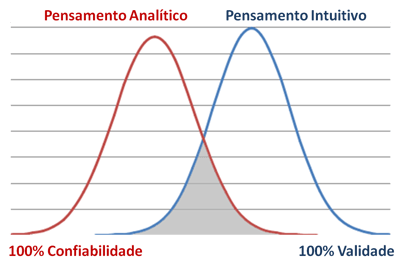Design Thinking, Stanford and Rottman focus on innovation.
The method is revolutionary and although based on some not so new ways of organizing ideas, it adds an important component, the users' perspective.
ESTRATÉGIAMARKETINGBLOG


The method is revolutionary and although based on some not so new ways of organizing ideas, it adds an important component, the users' perspective.
I had the opportunity to get involved with the topic of Design Thinking on two very interesting occasions. One of them was when I participated in a Workshop at Stanford with professors Martin Steinert and Larry Leifer, the latter one of the authors of the book Design Thinking, Understand – Improve – Apply (Understanding Innovation).
On Monday, I attended a lecture by Professor Roger L. Martin, from the Rottman School of Business and one of the gurus on the subject, at the University of Toronto, which I had the opportunity to study during the completion of my MBA.
Explaining the topic without actually experiencing it is not a simple task, but in this article I will address some of the most important points observed.
One of the most key issues is the focus on balancing analytical and intuitive issues, so that results can be achieved that have an impact on the spheres of reliability and validity of the solutions found.
Companies that seek innovation generally tend to want this to occur based on premises of past experiences, since it seems more logical and safe to rely on historical data as if they were a guarantee of future performance.
This behavior tends to make the future the same as the past and generates a false sense of security and assertiveness. However, as we know, it is impossible to predict the future. The so-called “validity” of ideas can only be verified in the future, once they have happened, and this dilemma prevents so-called “leaps of the mind” in many companies .
These “leaps” are the so-called innovation leaps and mean that certain ideas arise after a process of learning, construction and deconstruction of reasoning and perceptions and as such, they are impossible to prove in advance through an analytical approach, that is, with reliability.
Because of these factors, in the Design Thinking labs at Stanford we feel like children in kindergarten. Surrounded by tools and materials, it is possible to put ideas into practice within the 7 seconds of creativity each individual has, a time confirmed in several studies.
Think about how many times you had that brilliant idea before bed, only to be gone in a few seconds of distraction.
The process encourages the convergence and divergence of ideas, removing judgment barriers and bringing into play the different skills of different members of each group. Group performance is directly related to empathy and the emotional bond created between members.
Without realizing it, groups are led to navigate through the “knowledge funnel” leaving the mystery phase of how to solve a given problem, passing through the heuristic or idea organization phase and arriving at the creation of the algorithm, or the solution or proposal to solve the problem.
It is at this stage that low-adhesion prototypes can be created, giving participants the opportunity to test their ideas quickly and at low cost with their users.
Changing your point of view is also one of the strong points. Watch the video by Tim Brown, a pioneer of the method.
But wait, where does the user mentioned at the beginning of this article fit into this? Well, by building so-called “personas”, it is possible to determine the profile of a specific target audience, search for information about them and experience the “customer journey” to really understand what the important points are for that user profile.
1/3 of a project's time should be focused on understanding who the users are.
With the implementation of this method (don't call it a process), great innovations have already been possible. From the reduction of costs for assembling a satellite, to the launch of a new joystick for games that releases smoke after shooting.
At the heart of this methodology are some important items to note:
Place the user, persona, at the center of the creation process;
Seek to deconstruct old knowledge and encourage the flow of ideas, without judgment or prejudice;
Create an environment conducive to facilitating creative characteristics and prototyping, breaking down hierarchy and language barriers;
Keep groups small, preferably up to 4 individuals;
This seemingly unstructured method of innovation brings a unique opportunity to mix logic and perception, both ingredients of equal importance in the new complex scenarios of global competitiveness.
Making room for innovation within companies and constantly renewing this cycle is extremely important for any company seeking leadership and existence in the market in the long term.
There is no innovation without risk, but this can be minimized by using the various thinking heads and divergent experiences that exist in your company.
By adopting this method, your company will certainly develop a winning formula that combines analysis and perception.
See more articles
Featured Articles
Continue reading about B2B marketing


